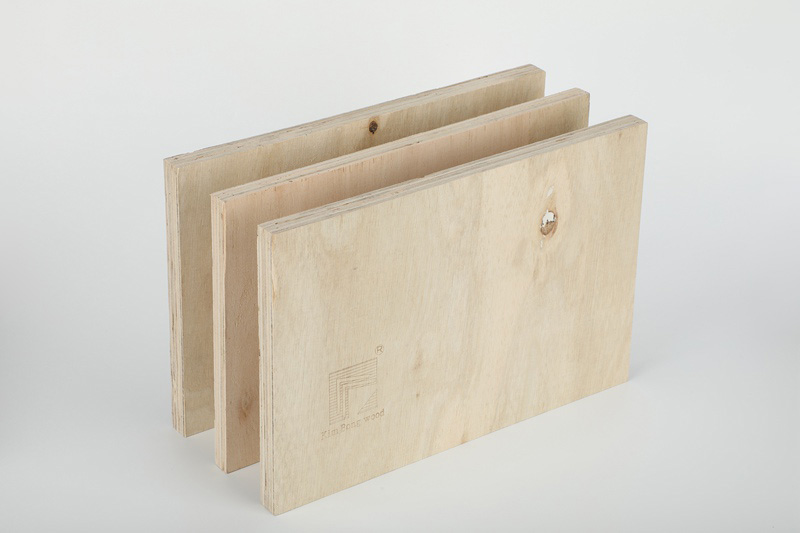What Is VOC-Free Plywood?
VOC-Free plywood is a specialized panel product manufactured with adhesives that contain no added formaldehyde or other harmful volatile organic compounds. Traditional plywood relies on urea-formaldehyde (UF) resins, which continuously off-gas this known respiratory irritant and carcinogen into the indoor environment for months or even years after installation. VOC-free plywood utilizes alternative bonding systems, such as polyurethane (PUR) or bio-based resins, that meet the strictest emission standards, effectively reducing indoor air pollution to natural background levels.
Key Characteristics and Technical Data
The value proposition of VOC-free plywood extends far beyond its non-toxic emissions profile. It is engineered to meet high-performance benchmarks.
1. Uncompromised Structural Performance:
The advanced adhesives used in these panels often provide superior bonding strength and durability. Key mechanical properties are robust:
Modulus of Elasticity (MOE): Typically ranges from 8,000 to 12,000 MPa, indicating high stiffness and resistance to deflection under load.
Modulus of Rupture (MOR): Generally falls between 20 and 30 MPa, demonstrating excellent load-bearing capacity before failure.
Internal Bond Strength: Frequently exceeds 0.8 MPa, ensuring the plies remain securely laminated under stress, which is critical for structural applications.
2. Enhanced Moisture Resistance:
Many VOC-free panels, particularly those bonded with moisture-curing PUR adhesives, achieve high durability ratings. They often meet Exposure 1 (able to withstand construction delays and high humidity) or Exterior standards. This performance is validated through tests like the Boil Test, where samples must retain a high percentage (often over 70%) of their original bond strength after extended boiling, proving exceptional resistance to delamination.
3. Precision Manufacturing and Versatility:
These panels are available in a complete range of standard thicknesses to suit any application, from fine cabinetry to heavy-duty flooring. Common and readily available sizes include 5mm (ideal for backing and drawer bottoms), 9mm (used for paneling and furniture), 12mm (a standard for cabinetry and shelving), 15mm (common for structural furniture and subflooring), and 18mm (used for heavy-duty worktops and flooring). This ensures designers and builders have the right material for every task.
4. Highly customizable:
Reflecting its use in quality-conscious markets, VOC-free plywood is available for OEM/ODM projects and accepts customized logos, allowing brands to align their identity with a premium, healthy material. Furthermore, the wood veneers are almost exclusively sourced from sustainably managed forests.
Primary Application Scenarios
The unique benefits of VOC-free plywood make it the material of choice across a diverse range of sectors:
Residential Construction: Essential for subflooring, sheathing, and roofing in modern, airtight homes where ventilation may be limited, directly protecting homeowner health.
Kitchen and Bathroom Cabinetry: As the core material for cabinets, it prevents the off-gassing of formaldehyde into confined spaces where food is prepared and people live.
Educational and Healthcare Facilities: Mandatory for furniture, partitions, and casework in schools, universities, hospitals, and clinics, protecting vulnerable populations like children and patients.
Sustainable Furniture Manufacturing: The preferred substrate for brands producing children's furniture, eco-friendly office desks, and home accessories, allowing them to market products as safe and non-toxic.
Specialized Commercial Interiors: Used in retail store fixtures, hotel furniture, and museum display cases where client well-being and a premium experience are priorities.
Proper Care and Maintenance
To ensure the longevity and appearance of VOC-free plywood, proper care is essential:
1. Handling and Storage: Panels must be stored flat in a dry, covered environment, raised off the ground on pallets to prevent moisture absorption and warping.
2. Cleaning: For finished surfaces (laminated, veneered, or painted), dust regularly with a soft, dry cloth. For deeper cleaning, use a damp cloth with a mild, pH-neutral detergent. Immediately wipe up any spills. Harsh chemicals, abrasives, or excessive water should always be avoided.
3. Preventing Damage: While moisture-resistant, prolonged exposure to water should be prevented. In humid environments, ensure adequate ventilation. Use coasters and pads under objects to prevent scratches and heat damage on horizontal surfaces.
4. Repair and Finishing: Minor scratches on veneer can be touched up with a matching marker. For unfinished projects, applying a low-VOC sealant, paint, or varnish is highly recommended to provide a durable protective barrier against wear, moisture, and UV damage.
Conclusion
VOC-free plywood is a definitive solution for the health- and eco-conscious demands of the 21st century. It successfully eliminates a significant source of indoor pollution without sacrificing the structural performance, versatility, and workability required by professionals. Available in a full spectrum of standard thicknesses (5mm, 9mm, 12mm, 15mm, 18mm) and open to OEM/ODM collaboration and customized branding, it is both a practical and strategic choice for manufacturers and builders.


